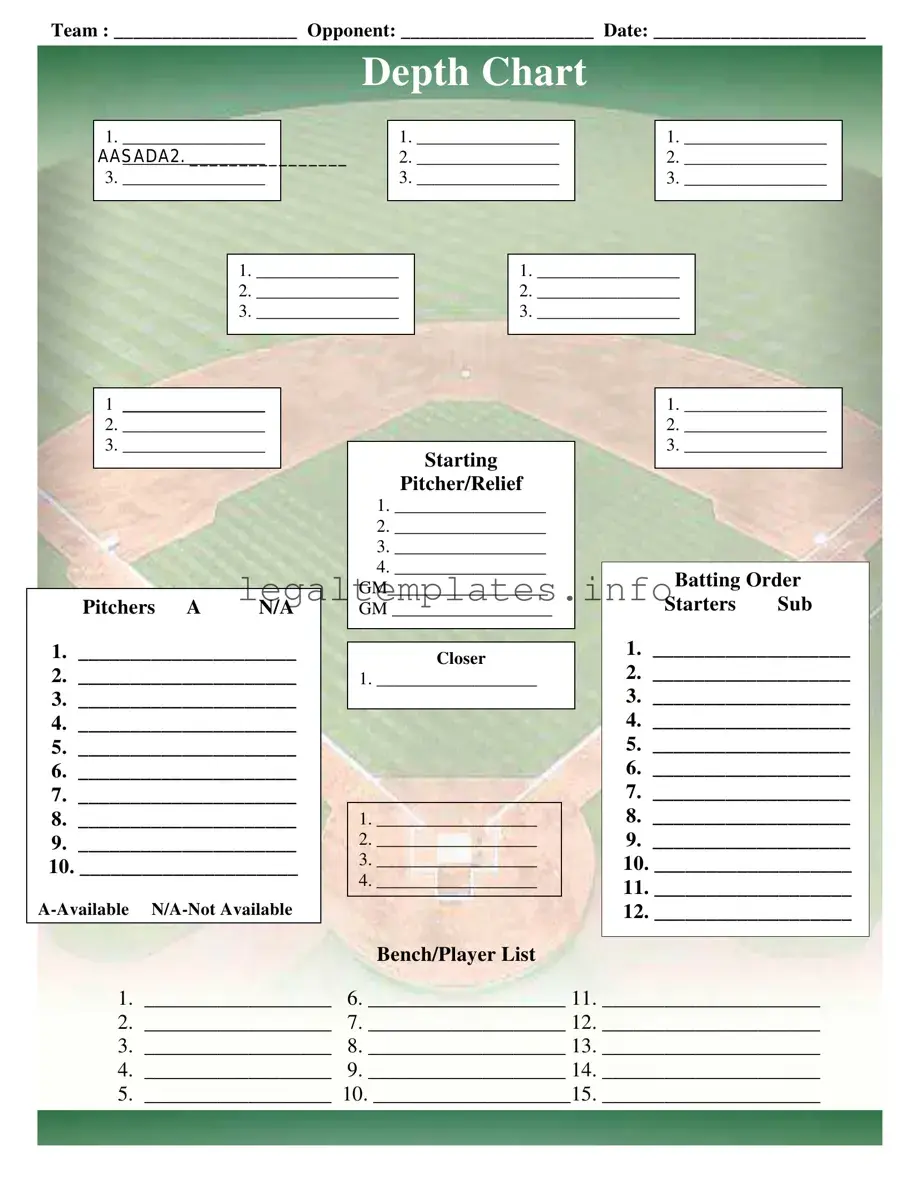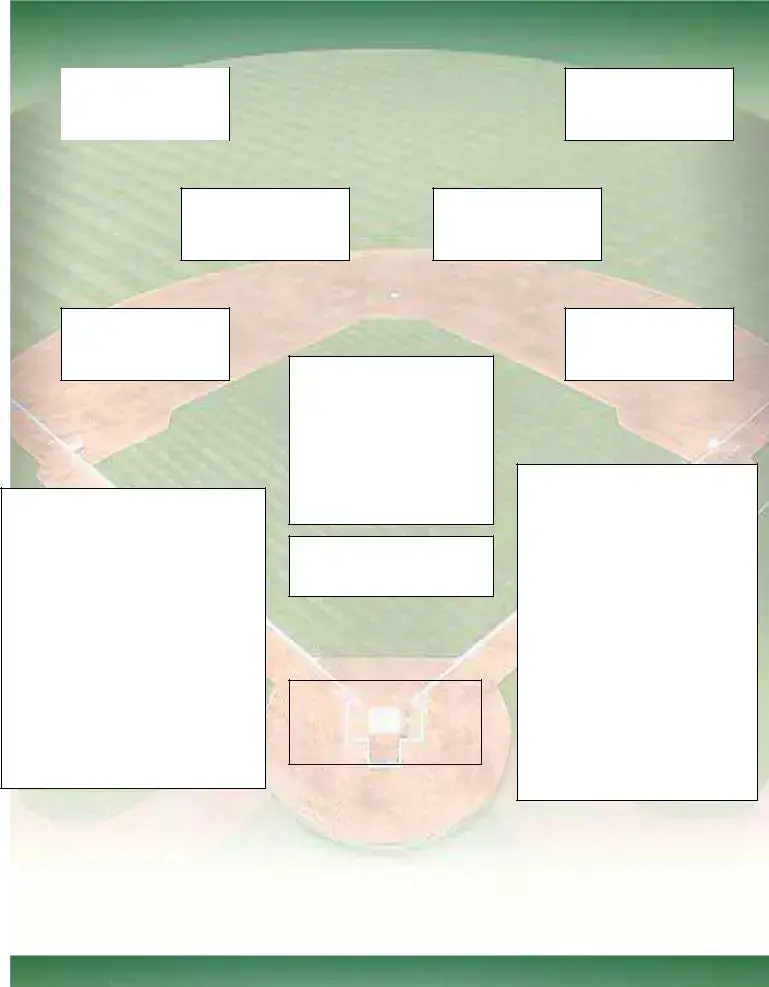What is the purpose of the Baseball Field Lineup form?
The Baseball Field Lineup form serves as a comprehensive tool for coaches and team managers to organize and record their team's lineup for a specific game. It allows for the detailing of the team and opponent names, the date of the game, the batting order, player positions, a depth chart for strategic substitutions, and the list of available and not available pitchers. This organized approach helps in strategizing the game effectively, ensuring players are well-positioned and substitutes are clearly outlined for every game scenario.
How is the Depth Chart section used in the Baseball Field Lineup form?
In the Baseball Field Lineup form, the Depth Chart section is used to list players according to their position on the field, with three slots available for each position. This enables the coach or team manager to plan for substitutions or changes in the lineup based on various factors such as player performance, injuries, or strategic plays during the game. It acts as a visual representation of the team's flexibility and depth in each position, ensuring readiness for all game situations.
Can you explain the significance of listing both available and not available pitchers in the form?
Listing both available (A) and not available (N/A) pitchers in the Baseball Field Lineup form is crucial for effective game management. This distinction allows coaches to quickly identify which pitchers are ready to play in the game and which are not due to factors like rest, injury, or strategic decisions. Having this information readily accessible helps in making informed decisions on pitching rotations and reliever strategies without the risk of overlooking a pitcher's availability status.
What should be included in the Starting Pitcher/Relief section?
The Starting Pitcher/Relief section is designed to identify the pitching strategy for the game. Here, the names of the chosen starting pitcher and up to three relief pitchers are listed. Additionally, spaces for a General Manager (GM) approval signature may be included to ensure that pitching decisions align with the team’s broader strategic goals. This section aids in the game’s pitching strategy, delineating a clear plan for who will start the game and who is designated as relief, allowing for a coherent transition throughout the game.
How does the Batting Order and Bench/Player List sections contribute to the game’s strategy?
The Batting Order section is crucial for outlining the sequence of players who will bat during the game, allowing the coach to strategically order hitters based on performance, matchups, and situational advantages. The Bench/Player List complements this by providing a list of all available substitutes. This dual structure ensures that there is a clear plan for initial batting order and a strategy for potential in-game adjustments. It enables quick decision-making regarding substitutions and adjustments to the batting lineup in reaction to the game's flow and developments.

